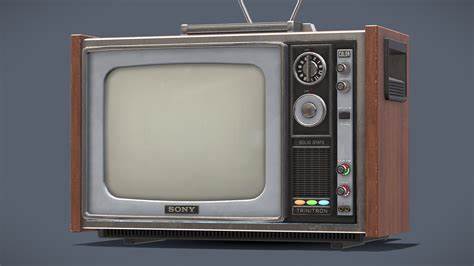
In the realm of television history, the name “Sony Trinitron 32” stands tall as a legendary innovation that revolutionized the way we view and experience content. The Trinitron series, particularly the 32-inch variant, introduced by Sony in the 1960s, marked a significant milestone in display technology. In this article, we delve into the captivating journey of Sony Trinitron 32, its groundbreaking features, and its enduring impact on the television industry.
The Genesis of Sony Trinitron 32
The Trinitron technology was born out of Sony’s relentless pursuit of picture quality excellence. Introduced in 1968, it was the world’s first successful consumer-grade color television with a cathode-ray tube (CRT) that utilized a unique aperture grille, setting it apart from traditional shadow mask CRTs.
The Evolution of Trinitron 32 Technology
Aperture Grille Innovation: The aperture grille, a key feature of Sony Trinitron 32, replaced the traditional shadow mask used in CRT TVs. This design allowed for greater electron beam precision, resulting in sharper images and improved color purity.
32-inch Brilliance: The 32-inch variant of Trinitron became a popular choice among consumers due to its impressive screen size and outstanding picture quality. It struck a perfect balance between being large enough for an immersive viewing experience and not being overly bulky.
Iconic Design: Sony Trinitron 32 featured the sleek and elegant design that the Trinitron series was known for. Its slim bezels and stylish appearance made it an attractive addition to any living room.
The Trinitron 32 Legacy
Quality and Popularity: Sony Trinitron 32 gained a dedicated fan base for its superior picture quality and reliability. The 32-inch variant was highly regarded for its sharp and vibrant display, making it a top choice for home entertainment.
Influence on Future Technologies: Trinitron’s aperture grille technology paved the way for innovations in display technologies. Its impact can be seen in later developments, including Sony’s own flat-panel Bravia series.
Transition to Flat Panels: While it enjoyed immense popularity, the advent of flat-panel LCD and plasma TVs eventually led to a decline in CRT television sales.
The legacy of it remains etched in the annals of television history. Its revolutionary aperture grille technology, coupled with its impressive 32-inch screen size, set new benchmarks for the industry. While newer display technologies have taken over the market, the impact of it on television technology is undeniable. For those who were privileged to experience the brilliance of this CRT TV, it will forever hold a special place in the hearts of entertainment enthusiasts and vintage technology collectors alike.


